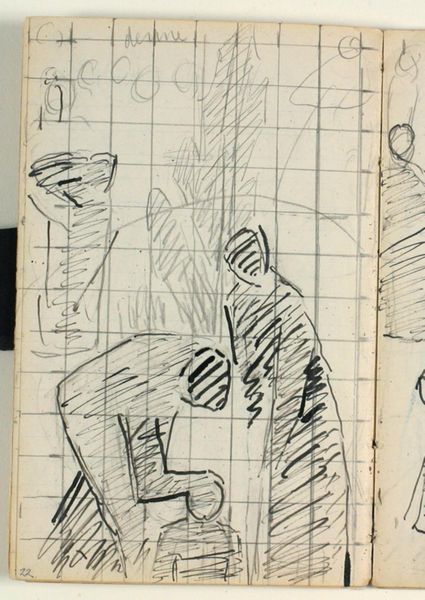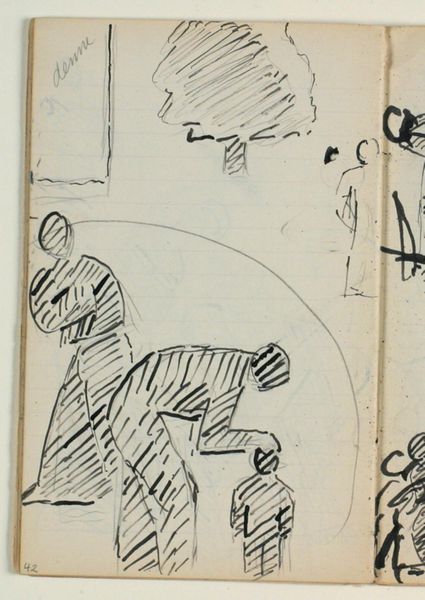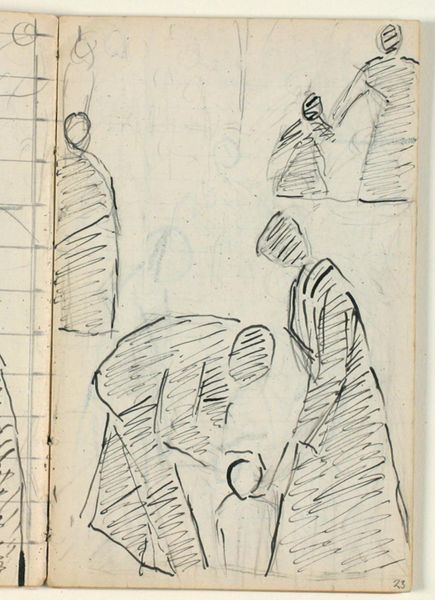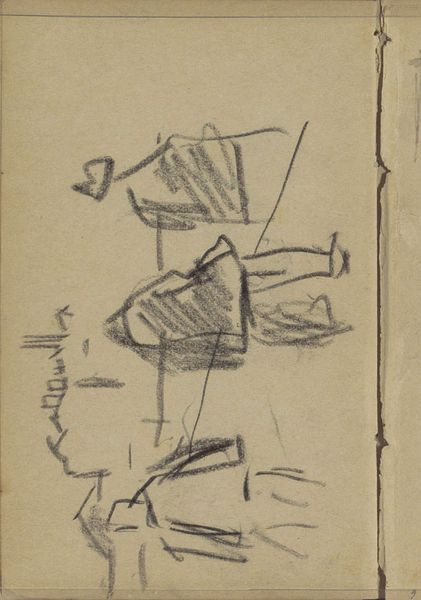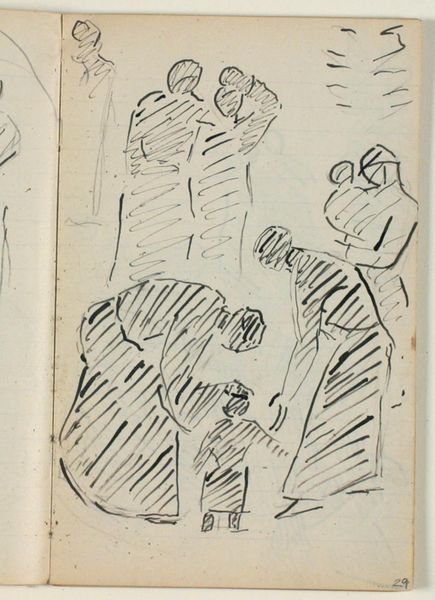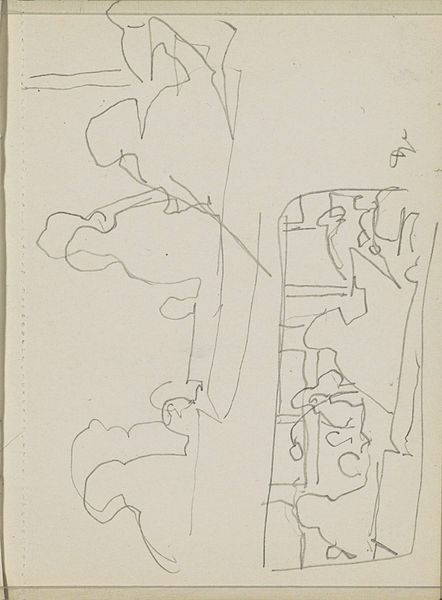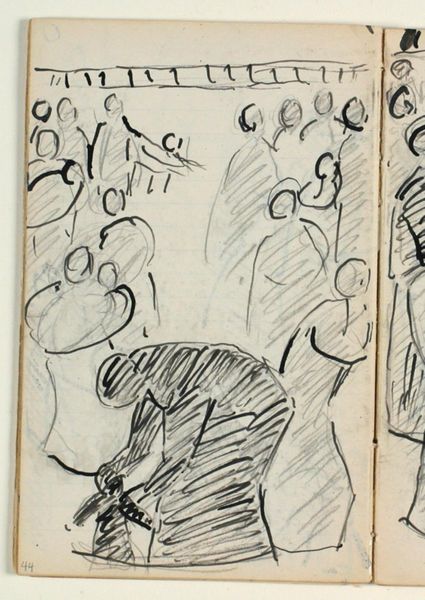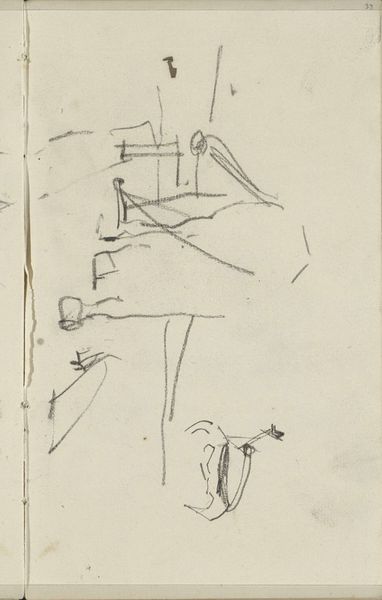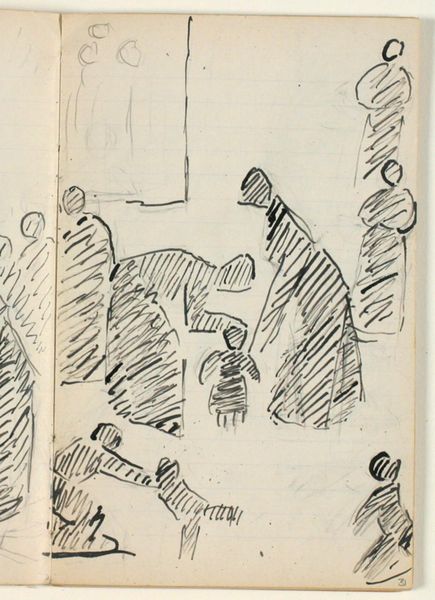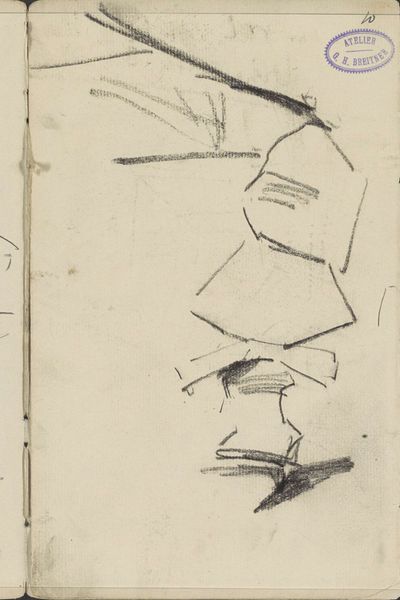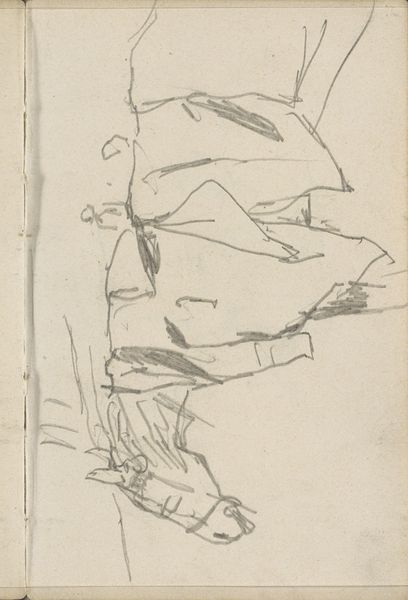
Udkast til "Kristus velsigner de små børn" 1937 - 1938
0:00
0:00
drawing, paper, pencil, charcoal
#
drawing
#
figuration
#
paper
#
pencil
#
charcoal
#
history-painting
Dimensions: 178 mm (height) x 111 mm (width) x 5 mm (depth) (monteringsmaal), 178 mm (height) x 111 mm (width) (bladmaal)
Editor: This is "Udkast til "Kristus velsigner de sm\u00e5 b\u00f8rn""— that's "Sketch for 'Christ Blessing the Little Children'"— by Niels Larsen Stevns, made with pencil and charcoal on paper, sometime between 1937 and 1938. It feels unfinished, raw, like a glimpse into the artist's process. What strikes you about this sketch? Curator: The grid immediately draws my attention. It's fascinating to consider how Larsen Stevns used this pre-printed grid, most likely from a sketchbook, to plan the composition for a much larger, presumably more polished history painting. The very act of transferring this intimate sketch to a grand scale involves navigating institutional expectations around religious art in the late 1930s. What narratives were acceptable, and how did visual choices reflect that? Editor: So, the grid is less about aesthetic choice and more about the practical considerations of creating a monumental work for public consumption? Curator: Precisely. How do you think the social and political climate of the late 30s, particularly concerns around religion and public art, influenced Larsen Stevns' decisions when adapting this initial sketch? It is impossible to extract art from social forces. Editor: That makes me think about censorship and self-censorship. Were there specific constraints that Danish artists faced at that time regarding religious subjects? Curator: The cultural context heavily shaped how artists could represent religious figures, steering clear of overt political statements while also trying to connect with contemporary audiences. Did the museum commission the work or the state? What pressures do you imagine this would apply to the artist? Editor: Thinking about the public role of religious art, I hadn't considered how much these decisions are intertwined with power dynamics and the intended audience. I assumed the artist was simply depicting a Biblical scene, absent any context! Curator: That’s the key isn't it: to read beneath the surface and unpack the hidden meanings that would be available to contemporary viewers. Art and the institutions behind its creation are rarely ever neutral. Editor: This has made me appreciate the sketch as more than just a preliminary drawing. It's a document reflecting artistic choices made within a specific historical and political environment.
Comments
No comments
Be the first to comment and join the conversation on the ultimate creative platform.
